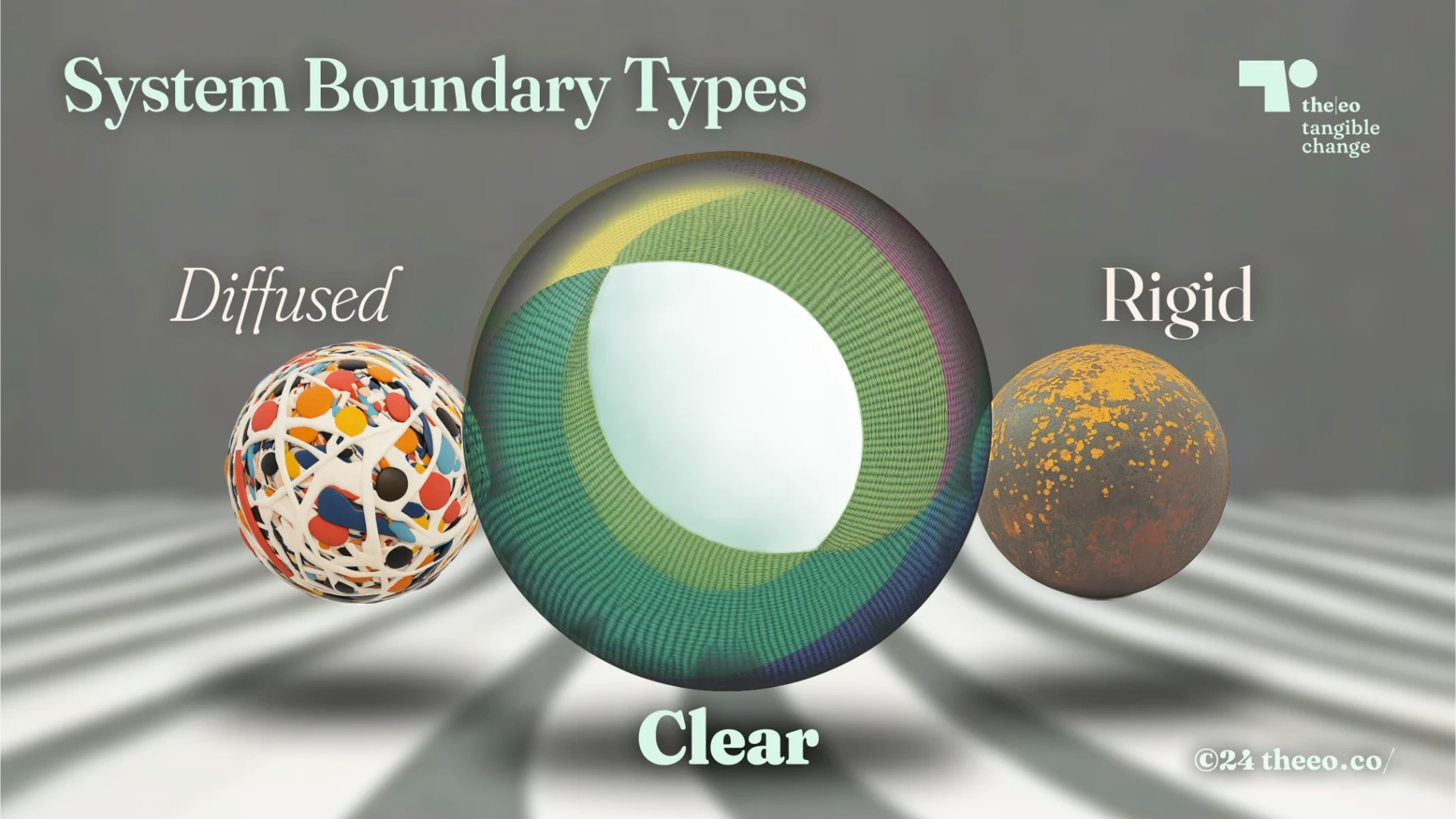System Boundaries
Clear Boundaries. Not Diffused. Not Rigid.
Understanding System Boundaries
Systems, how they operate, and any leadership ethos, or organisation strategy fall into three categories of boundaries. These are (1) Diffused, (2) Rigid, or (3) Clear. Think of them as "rules" by which an organisation runs, consciously or unconsciously.

The Power of Clear Boundaries
Clear is the rigorous, mature, kinetic team adoption.
You cannot mandate clarity. You must wire it, be it, and exist as it.
As an intentional organisation.
As kinetic teams.
As conscious leaders.
As self-sovereign, accountable individuals.
As collective, collaborative players.
Living Clarity as an Organisation and Team
To run on clarity, you must find comfort in debate, definition, and decision about the design by which you choose to function. You are not defined by rules, cultures, or structures from elsewhere. You are not defined by an external set of rules, a culture, or a structure imagned elsewhere. You do the work.
You speak out loud.
You build.
You lead.
You make and own shared decisions.
You change, as needed, without blame, deflection, projection, or victimhood.
You understand that the outcomes of your actions are emergent properties.
You get comfortable riding in flow.
You learn to think and respond in real time.
Clear. Not diffused. Not rigid.
Facing Your Boundary Issues
Nobody is getting out of this exercise without boundary awakening.
Everything you thought you knew about the art of a boundary should be challenged.
Be open to rethinking how you sense-make about (1) what they are, (2) how you "set" them, (3) why they matter, and (4) whether you have them built.
A system becoming a more mature, evolved, and strategic cast of characters is highly reliant upon how it imagines and overtly sets its strategic boundaries.
The Problem Boundaries
The Problem with Diffused
We dislike diffused boundaries because they are murky, unarticulated, and assumed.
Think of them as boundaries that are too open and yield too much interference.
The Problem with Rigid
Rigid boundaries are the makings of redundant, reductive, wasteful gerbil wheeling as an operating design.
These are terrible for a maturity model because rigid boundaries stop progression and expansion.
Rigid and/or diffused boundaries are immature defaults. They are both lazy, mechanical, uninspired, and unconscious relics of outdated system designs.
The Target Boundary
The Reason for Clear
What is the evolutionary goal and strategic target?
A system of clear boundaries is a system of continuous negotiation and decisioning – not one of incremental, mechanical, small-minded tasking.
Clarity as a Whole System Design
Clarity must become your system design objective.
Clarity holds a system in rigor. Clarity demands presence. Clarity asks for your individual and collective courage.
Open communicate all the way home to clarity.
Stop confounding open information or open communication with open boundaries. They are not the same.
Confront yourselves with the fact that you are not speaking up and doing the real-time boundary work.
Acknowledge that you have to stop standing in judgment.
Start participating, and stop lobbing.
Rigor & Talent Driven
Clarity is the work of dimensional, real-time, rigorous whole system designing. It demands intentional, authentic people with actual technical talent committed to achieving outcomes, appreciating how clear boundaries are part of the recipe to elevate and expand continuously.

